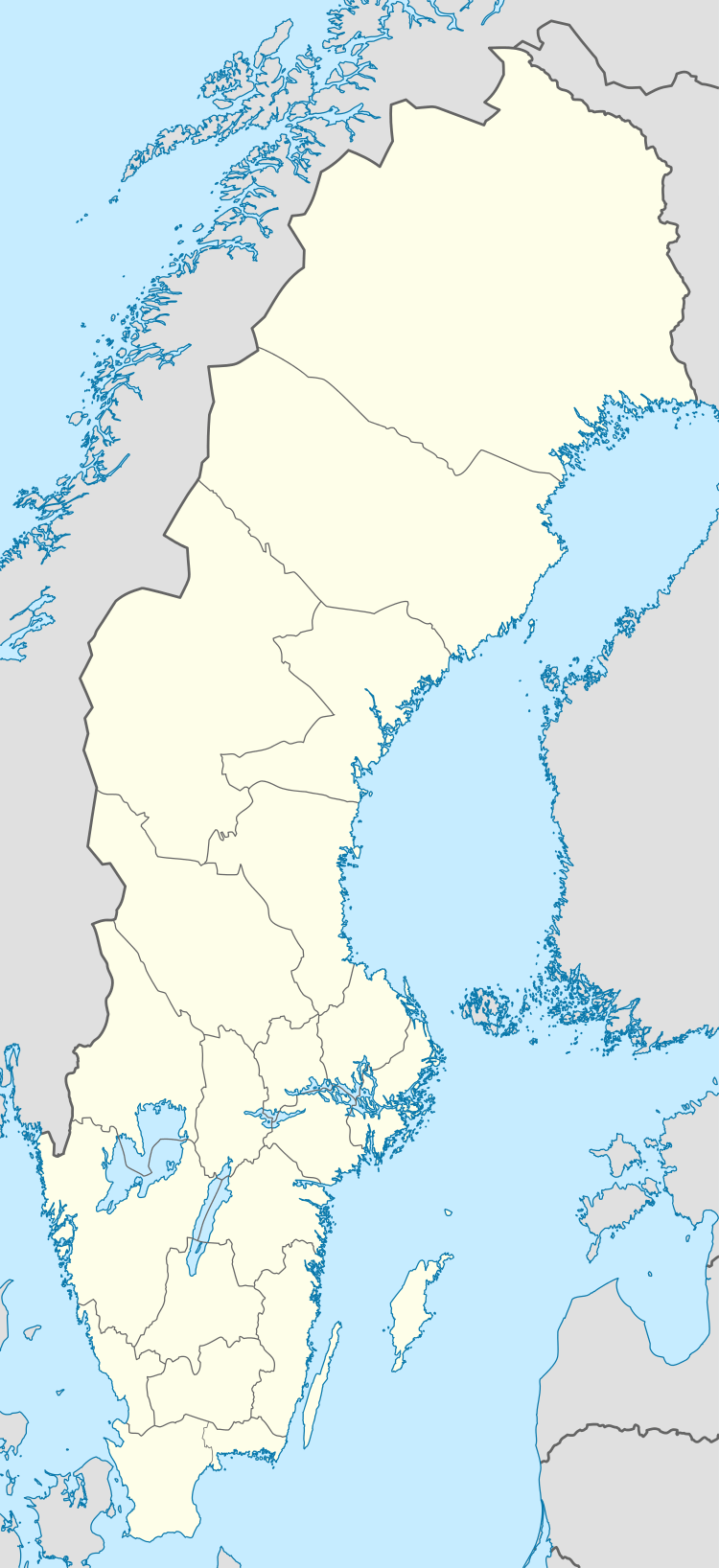Kävlinge
Kävlinge (Swedish pronunciation: [ˈɕɛ̂ːvlɪŋɛ])[2] (old Danish: Kævlinge) is a locality and the seat of Kävlinge Municipality, Skåne County, Sweden with 9,049 inhabitants in 2010.[1]
Kävlinge | |
|---|---|
 Kävlinge Church | |
 Coat of arms | |
 Kävlinge  Kävlinge | |
| Coordinates: 55°47′38″N 13°06′48″E | |
| Country | Sweden |
| Province | Skåne |
| County | Skåne County |
| Municipality | Kävlinge Municipality |
| Area | |
| • Total | 4.68 km2 (1.81 sq mi) |
| Population (31 December 2010)[1] | |
| • Total | 9,049 |
| • Density | 1,932/km2 (5,000/sq mi) |
| Time zone | UTC+1 (CET) |
| • Summer (DST) | UTC+2 (CEST) |
In 1996, a train containing large amounts of ammonia derailed and around 9,000 people had to be evacuated from the area. This was the biggest evacuation operation in Swedish history.[3]
Near Kävlinge is the site of the Hög passage grave, a Bronze Age barrow covering a neolithic burial chamber. Hög means mound from the Old Norse word haugr for hill. The finds from the excavations are in the Lund University Historic Museum.[4]
Battle of Lund
Kävlinge is located north of Lund and has a river passing through called Kävlingeån (translated Kävlinge River). The river played an important role at the events leading up to the Battle of Lund, which was a battle in the Scanian War.
References
- "Tätorternas landareal, folkmängd och invånare per km2 2005 och 2010" (in Swedish). Statistics Sweden. 14 December 2011. Archived from the original on 10 January 2012. Retrieved 10 January 2012.
- Jöran Sahlgren; Gösta Bergman (1979). Svenska ortnamn med uttalsuppgifter (in Swedish). p. 15.
- Observatörsrapport: Ammoniakolyckan i Kävlinge april 1996. Räddningsverket
- Hög Passage Grave - Passage Grave in Sweden in Skåne